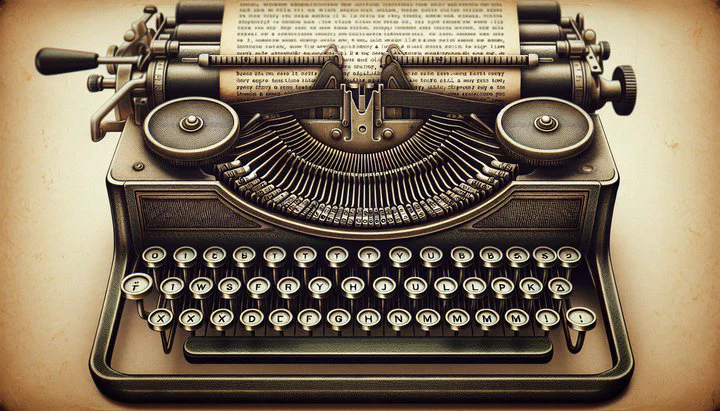Fix Faint Letters at Bottom of Typewriter

How to Fix Faint Letters at the Bottom of Your Typewriter Pages
Have you noticed faint letters at the bottom of your typewritten pages? You’re not alone! Let’s explore why this happens and how you can fix it.
Understanding the Problem
Typewriters use a combination of ink ribbons and a platen to transfer ink onto your paper. The ink ribbon sits between the typebars and the paper. When you press a key, the typebar strikes the ribbon, leaving an imprint on the paper. The platen, which is the rubber roller that the paper wraps around, provides a firm surface for this action.
Over time, the ink ribbon can dry out or become worn, which might cause the letters to be faint at the bottom of your page. If the ribbon isn’t supplying enough ink, your typing will look faded or incomplete. Similarly, the platen can become hard or uneven with age, which affects how the typebars hit the paper. If the platen isn’t in good condition, it won’t provide the right resistance for clear typing.
In essence, both a worn-out ink ribbon and an old or damaged platen can lead to faint letters at the bottom of typewriter pages. Understanding these components is the first step in solving the problem, so you can get back to enjoying the crisp, clear text that typewriters are known for.
Simple Fixes to Try First
If you’re dealing with faint letters at the bottom of your typewriter pages, don’t worry! There are some simple fixes you can try before getting into more complex adjustments. Let’s start with the easiest solution: replacing the ink ribbon.
-
Replace the Ink Ribbon:
- Check if your ink ribbon is old or dried out. A new ink ribbon can often solve the problem of faint typing. To replace it, carefully open the typewriter’s ribbon cover. Remove the old ribbon by sliding it off the spools and winding it up to prevent ink stains. Take your new ink ribbon and thread it through the guides, making sure it sits properly between the typebars and the paper. Once it’s in place, close the cover and type a few lines to check the improvement.
-
Ensure Proper Paper Alignment:
- Misaligned paper can cause the typebars to hit unevenly, resulting in letters that are faint at the bottom. Carefully insert the paper, aligning it with the guides on your typewriter. Make sure it’s snug and straight before you start typing. Using high-quality paper can also make a difference, as thicker paper provides a better surface for the typewriter to work on.
By trying these straightforward solutions, you often don’t need to delve into complicated fixes right away. If these steps don’t fully solve the problem, let’s explore some more advanced options.
Advanced Solutions for Persistent Issues
If you’ve tried the simple fixes and are still experiencing faint letters at the bottom of your typewriter pages, it might be time to explore some more advanced solutions. Don’t worry, you won’t need to dive into the complex internals of your typewriter just yet. Let’s look at some steps you can take that don’t require you to mess with the internals.
-
Resurface the Platen:
- Over time, the platen can become hard or uneven, which affects how the typebars hit the paper. A smooth, even platen is crucial for ensuring that your letters are crisp and clear. Resurfacing involves gently sanding the platen to remove any hardened spots and restore its original texture. You can do this by using fine-grit sandpaper, but make sure to proceed with caution. If you’re unsure about doing this yourself, it might be best to seek professional help to avoid damaging your typewriter.
-
Seek Professional Servicing:
- If resurfacing the platen doesn’t solve the issue, or if you feel uncomfortable attempting it, consider taking your typewriter to a professional for servicing. Experienced technicians can identify any underlying problems that might be causing the letters to be faint at the bottom of your pages. They can also perform routine maintenance to keep your typewriter in top shape. Regular servicing can prevent small issues from becoming bigger, more costly problems down the line.
Remember, maintaining a typewriter is like caring for a vintage car. It requires patience and a little bit of know-how, but the reward is a beautifully functioning machine that can provide you with years of enjoyment. While it might seem daunting to tackle these issues, the satisfaction of preserving a piece of analog history is well worth the effort. Whether you choose to resurface the platen or seek professional help, you’re one step closer to achieving the clear, beautiful typing that makes typewriters such a joy to use.
Conclusion
By following these advanced solutions, you can address those stubborn faint letters at the bottom of typewriter pages and continue your analog journey with confidence. If you have any questions or tips of your own, feel free to share them in the comments below. Together, we can ensure our typewriters keep producing beautiful, clear text for years to come.